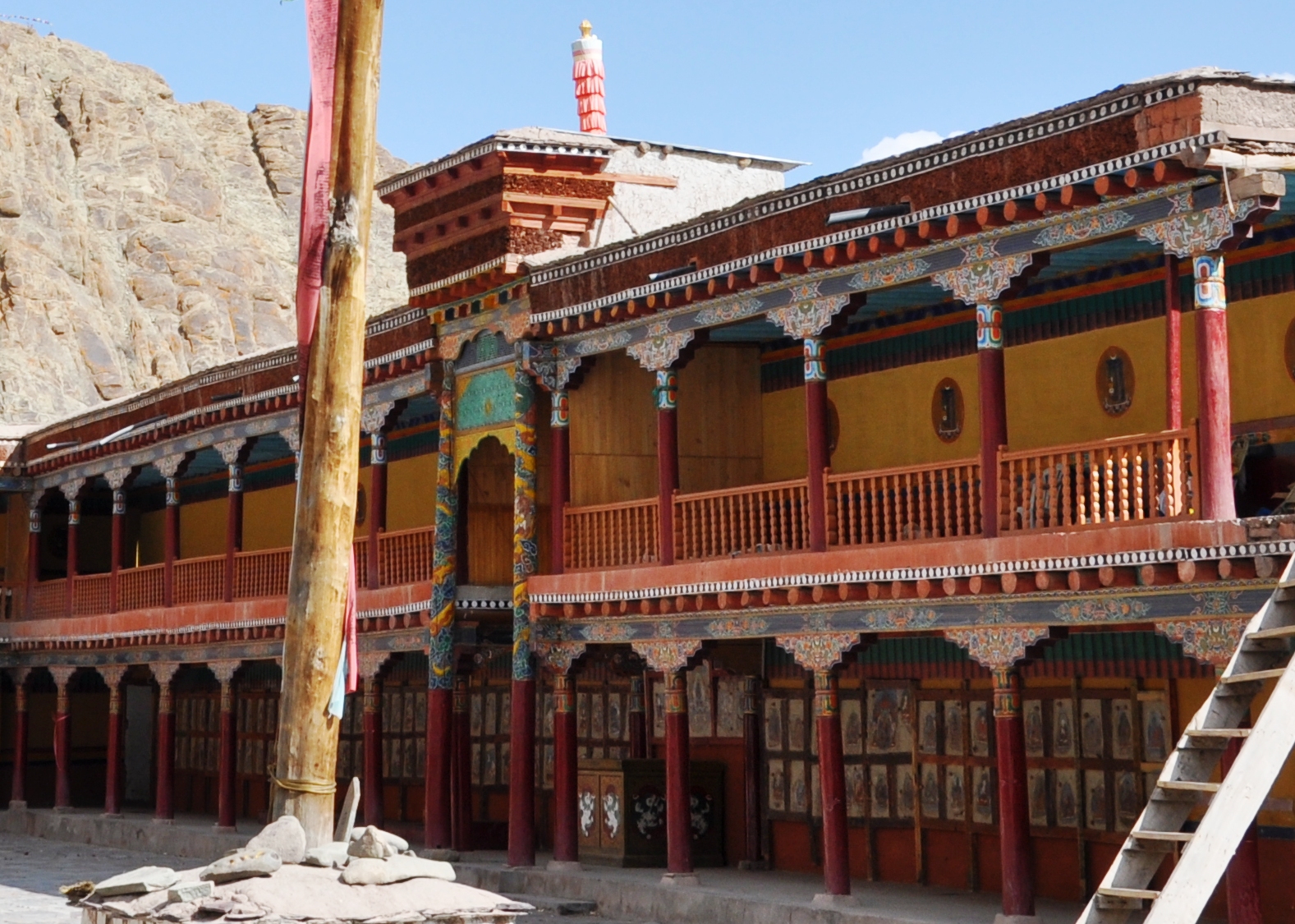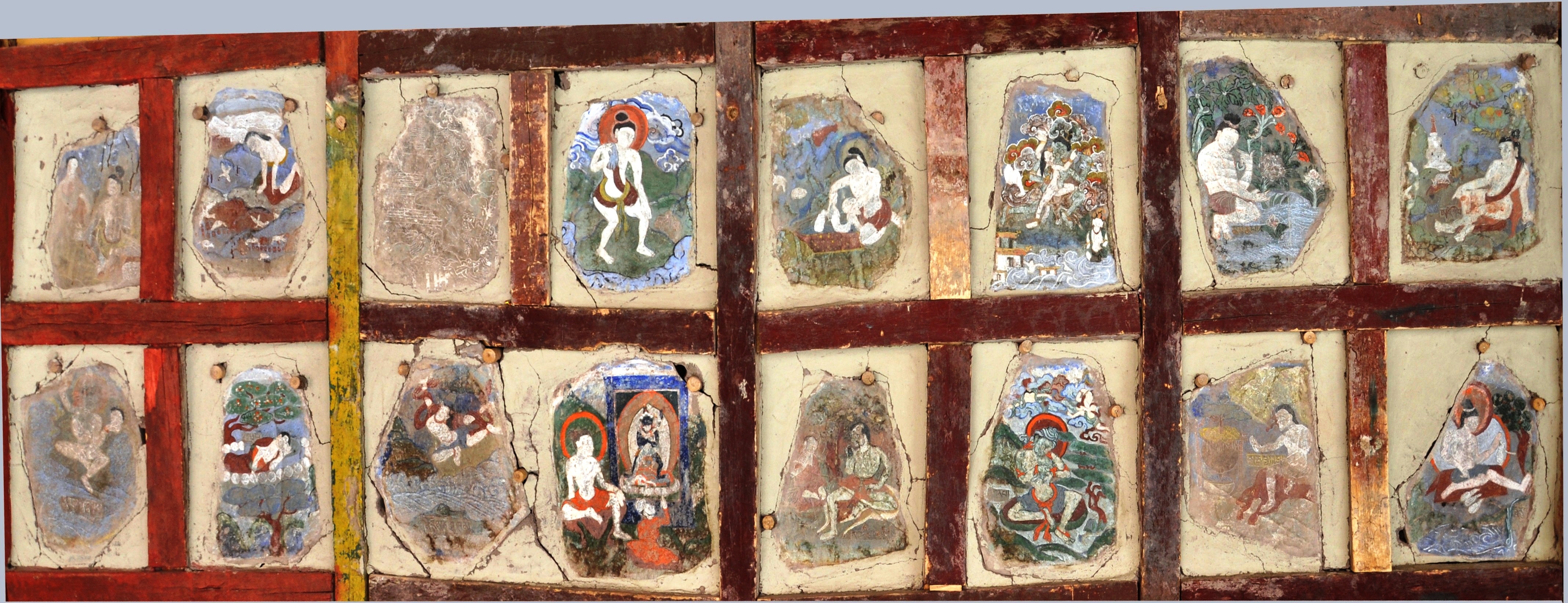Hemis Monastery on:
[Wikipedia]
[Google]
[Amazon]

 Hemis Monastery is a Himalayan Buddhist monastery (''
Hemis Monastery is a Himalayan Buddhist monastery (''
The Unknown Life of Jesus Christ
', by Nicolas Notovitch, Translated by J. H. Connelly and L. Landsberg.
 In the courtyard of the Monastery there is gallery with of paintings of
In the courtyard of the Monastery there is gallery with of paintings of 













File:Chortens at Hemis Gompa.jpg, Chortens at Hemis Gompa
File:Mani wall along driveway to Hemis Monastery.jpg, Mani wall along driveway to Hemis Monastery
File:View from Hemis Monastery. 2010.jpg, View from Hemis Monastery. 2010
File:Монастырь Хемис в Ладаке.jpg, ''Hemis Monastery in Ladakh'', by Vasily Vereshchagin (1875)
File:Hemis Monastery 01.jpg, The entrance of Hemis monastery
File:Hemismonastery7.jpg, Inside the Hemis Monastery
File:Mural painting, monastery Hemis, Ladakh, India.jpg, Mural painting in the Hemis monastery
File:Hemismonastery.jpg, Traditional Monk Dance at Hemis Festival
File:Hemismonastery6.jpg, Traditional Ladakhi Women at Hemis Monastery

 Hemis Monastery is a Himalayan Buddhist monastery (''
Hemis Monastery is a Himalayan Buddhist monastery (''gompa
A Gompa or Gönpa ( "remote place", Sanskrit ''araṇya''), also known as ling (), is a Buddhist ecclesiastical fortification of learning, lineage and sādhanā that may be understood as a conflation of a fortification, a vihara and a universit ...
'') of the Drukpa Lineage, in Hemis
Hemis, also spelled Hamis, is a village in the Leh district of Ladakh, India. It is located in the Kharu tehsil, 40 km southeast of Leh town on the Leh-Manali Highway and under-construction Bilaspur–Leh line.
Hemis is well known for ...
, Ladakh
Ladakh () is a region administered by India as a union territory which constitutes a part of the larger Kashmir region and has been the subject of dispute between India, Pakistan, and China since 1947. (subscription required) Quote: "Jammu ...
, India
India, officially the Republic of India (Hindi: ), is a country in South Asia. It is the seventh-largest country by area, the second-most populous country, and the most populous democracy in the world. Bounded by the Indian Ocean on the so ...
. Situated 45 km from Leh, it was re-established in 1672 by the Ladakh
Ladakh () is a region administered by India as a union territory which constitutes a part of the larger Kashmir region and has been the subject of dispute between India, Pakistan, and China since 1947. (subscription required) Quote: "Jammu ...
i king Sengge Namgyal
Sengge Namgyal (''Sen-ge-rnam-rgyal'', c. 1570–1642) was a 17th-century Namgyal dynasty King of Ladakh, India from 1616 to his death in 1642. A Buddhist, he was noted for his immense work in building monasteries, palaces and shrines in Ladakh ...
. The annual Hemis festival honouring Padmasambhava
Padmasambhava ("Born from a Lotus"), also known as Guru Rinpoche (Precious Guru) and the Lotus from Oḍḍiyāna, was a tantric Buddhist Vajra master from India who may have taught Vajrayana in Tibet (circa 8th – 9th centuries)... According ...
is held there in early June.
Hemis village is located 40 km southeast of Leh on Leh-Manali Highway and under-construction Bilaspur–Leh line
Bilaspur–Manali-Leh line is an under-construction high-elevation all-weather broad gauge railway track connecting Bilaspur in Himachal Pradesh to Leh in Ladakh union territory of India. It will connect major hill towns of Bilaspur, Mandi, K ...
.
History
Hemis Monastery existed before the 11th century. In 1894 Russian journalistNicolas Notovitch
Shulim or Nikolai Aleksandrovich Notovich (russian: Николай Александрович Нотович) (August 13, 1858 – after 1916), known in the West as Nicolas Notovitch, was a Crimean Jewish adventurer who claimed to be a Russian ar ...
claimed Hemis as the origin of an otherwise unknown gospel
Gospel originally meant the Christian message (" the gospel"), but in the 2nd century it came to be used also for the books in which the message was set out. In this sense a gospel can be defined as a loose-knit, episodic narrative of the words a ...
, the ''Life of Saint Issa, Best of the Sons of Men,'' in which Jesus is said to have travelled to India during his ' lost years'. According to Notovitch, the work had been preserved in the Hemis library and was shown to him by the monks there while he was recuperating from a broken leg. But once his story had been re-examined by historians, it is claimed that Notovitch confessed to having fabricated the evidence.'' New Testament Apocrypha, Vol. 1: Gospels and Related Writings'' by Wilhelm Schneemelcher
Wilhelm Schneemelcher (21 August 1914, Berlin – 6 August 2003, Bad Honnef) was a German Protestant theologian and expert on the New Testament Apocrypha.
Career
He obtained through Hans Lietzmann a post researching Latin and Greek manuscripts ...
and R. Mcl. Wilson (1 December 1990) page 84 "a particular book by Nicolas Notovich (Di Lucke im Leben Jesus 1894) ... shortly after the publication of the book, the reports of travel experiences were already unmasked as lies. The fantasies about Jesus in India were also soon recognized as invention... down to today, nobody has had a glimpse of the manuscripts with the alleged narratives about Jesus"'' Indology, Indomania, and Orientalism'' by Douglas T. McGetchin (1 January 2010) Fairleigh Dickinson University Press page 133 "Faced with this cross-examination, Notovich confessed to fabricating his evidence." Bible scholar Bart D. Ehrman
Bart Denton Ehrman (born 1955) is an American New Testament scholar focusing on textual criticism of the New Testament, the historical Jesus, and the origins and development of early Christianity. He has written and edited 30 books, including t ...
states that "Today there is not a single recognized scholar on the planet who has any doubts about the matter. The entire story was invented by Notovitch, who earned a good deal of money and a substantial amount of notoriety for his hoax".
The Indian Pandit Swami Abhedananda
Swami Abhedananda (2 October 1866 – 8 September 1939), born Kaliprasad Chandra, was a direct disciple of the 19th century mystic Ramakrishna Paramahansa and the founder of Ramakrishna Vedanta Math. Swami Vivekananda sent him to the West to h ...
also claims to have read the same manuscript and published his account of viewing it after his visit to Hemis in 1921. Abhedananda claims on the book jacket that it was translated for him with the help of a "local Lama interpreter." After Abhedananda's death, one of his disciples admitted that when he went to the monastery to ask about the documents, he was told that they had disappeared. (In the same vein, Notovich did not initially translate the manuscript but said that his Sherpa guide did, as he could not read the original text.) Notovich's version of the manuscript was translated from Tibetan to Russian to French to English. According to Swami Abhedananda's account, his Lama's translation was equivalent to the one published by Notovich. The Gutenberg Project has published Notovich's manuscript as a free ebook.The Project Gutenberg eBook, The Unknown Life of Jesus Christ
', by Nicolas Notovitch, Translated by J. H. Connelly and L. Landsberg.
Paintings of Mahasiddhas
 In the courtyard of the Monastery there is gallery with of paintings of
In the courtyard of the Monastery there is gallery with of paintings of Mahasiddha
Mahasiddha ( Sanskrit: ''mahāsiddha'' "great adept; ) is a term for someone who embodies and cultivates the "siddhi of perfection". A siddha is an individual who, through the practice of sādhanā, attains the realization of siddhis, psychic ...
s Eighty-Four_Mahasiddhas. These are 17th century paintings of ground mineral pigments.
Ref images in the gallery – Paintings of Mahasiddhas 1 to 14














Hemis Festival
The Hemis Festival is dedicated to LordPadmasambhava
Padmasambhava ("Born from a Lotus"), also known as Guru Rinpoche (Precious Guru) and the Lotus from Oḍḍiyāna, was a tantric Buddhist Vajra master from India who may have taught Vajrayana in Tibet (circa 8th – 9th centuries)... According ...
(Guru Rinpoche) venerated as the Dance Performance at Hemis Monastery representative reincarnate of Buddha. He is believed to have been born on the 10th day of the fifth month of the Monkey year as predicted by the Buddha Shakyamuni
Siddhartha Gautama, most commonly referred to as the Buddha, was a wandering ascetic and religious teacher who lived in South Asia during the 6th or 5th century BCE and founded Buddhism.
According to Buddhist tradition, he was born in Lu ...
. It is also believed that his life mission
is was, and remains, to improve the spiritual condition of all living beings. And so on this day, which comes once in a cycle of 12 years, Hemis observes a major extravaganza in his memory. The observance of these sacred rituals is believed to give spiritual strength and good health. The Hemis festival takes place in the rectangular courtyard in front of the main door of the monastery. The space is wide and open save two raised square platforms, three feet high with a sacred pole in the center. A raised dais with a richly cushioned seat with a finely painted small Tibetan table is placed with the ceremonial items – cups full of holy water, uncooked rice, torma
Torma (Skt: Balingta, Tib: Tor-ma, Wylie: gtor ma) are figures made mostly of flour and butter used in tantric rituals or as offerings in Tibetan Buddhism. They may be dyed in different colors, often with white or red for the main body of t ...
s made of dough and butter and incense sticks. A number of musicians play the traditional music with four pairs of cymbals, large-pan drums, small trumpets and large size wind instruments. Next to them, a small space is assigned for the lamas to sit.
The ceremonies begin with an early morning ritual atop the Gompa where, to the beat of drums and the resounding clash of cymbals and the spiritual wail of pipes, the portrait of "Dadmokarpo" or "Rygyalsras Rinpoche" is then ceremoniously put on display for all to admire and worship.
The most esoteric of festivities are the mystic mask dances. The Mask Dances of Ladakh are referred collectively as chams Performance. Chams performance is essentially a part of Tantric tradition, performed only in those gompas which follow the Tantric Vajrayana
Vajrayāna ( sa, वज्रयान, "thunderbolt vehicle", "diamond vehicle", or "indestructible vehicle"), along with Mantrayāna, Guhyamantrayāna, Tantrayāna, Secret Mantra, Tantric Buddhism, and Esoteric Buddhism, are names referring t ...
teachings and the monks perform tantric worship.
Gallery
Footnotes
References
* Francke, A. H. (1914, 1926). ''Antiquities of Indian Tibet''. Two Volumes. Calcutta. 1972 reprint: S. Chand, New Delhi.External links
{{Authority control 1672 establishments in Asia Buddhist monasteries in Ladakh Drukpa Kagyu monasteries and temples Ladakh